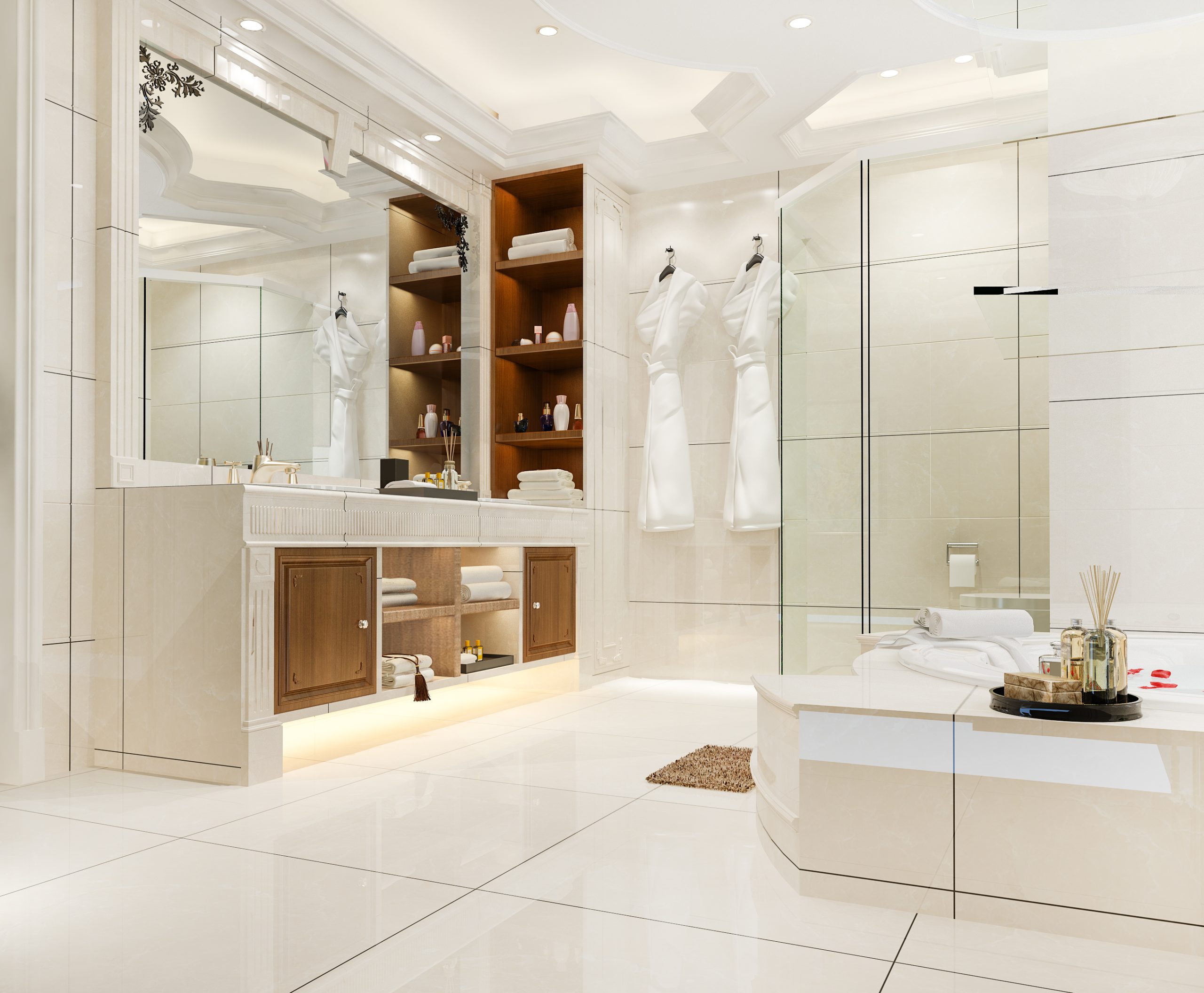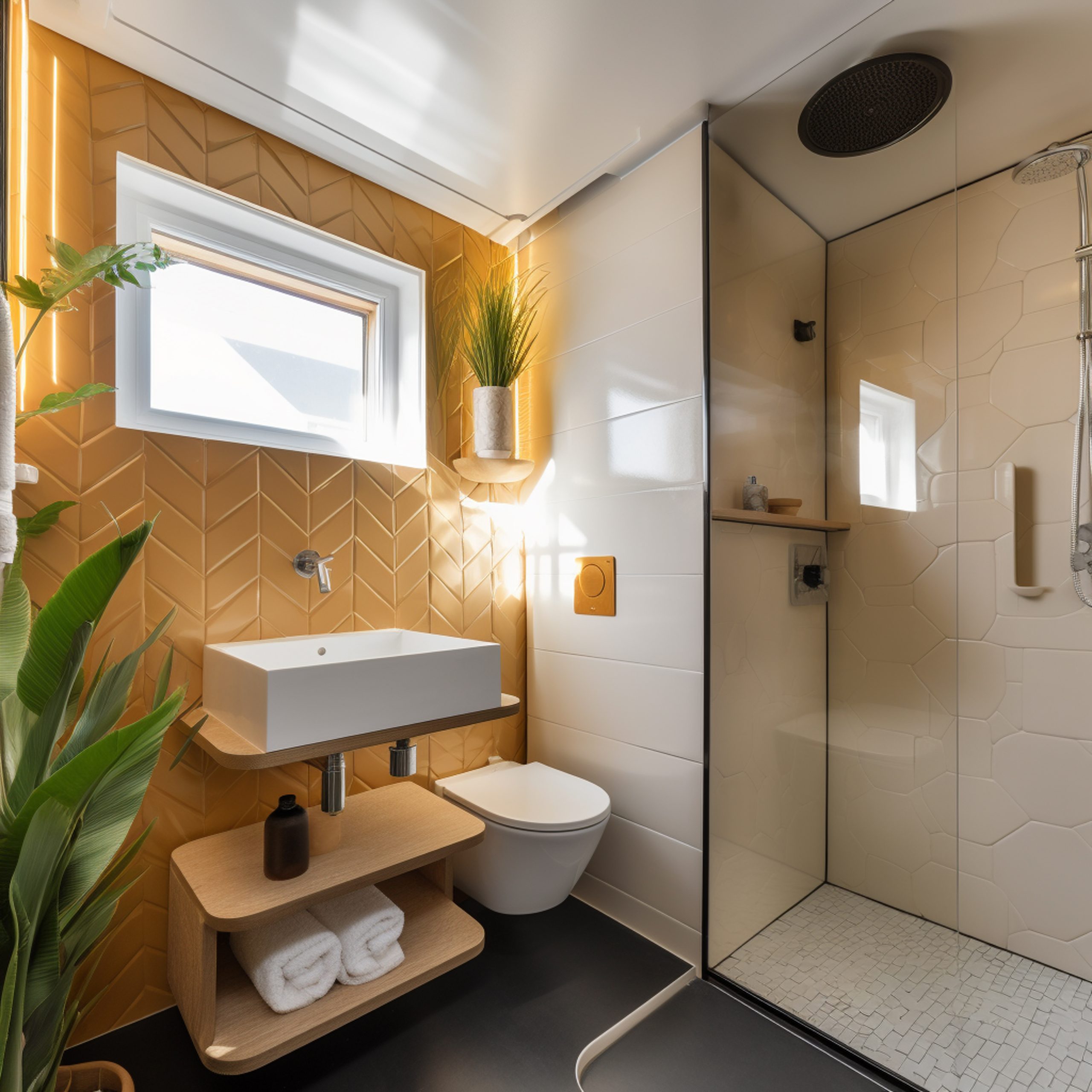Bathroom Re-Modeling can be one of the most exciting yet challenging home improvement projects. Whether you’re looking to update a dated design, increase functionality, or enhance your home’s value, a bathroom renovation has the potential to make a significant impact. In this blog post, we’ll guide you through the essential aspects of remodeling a bathroom, from planning and budgeting to design choices and execution.
Why Remodel Your Bathroom?
Bathrooms are among the most frequently used rooms in any home, so it’s no surprise that they wear down over time. Whether it’s outdated fixtures, cracked tiles, or insufficient storage, many factors might prompt you to rethink your bathroom layout. Here’s why bathroom remodeling can be a game-changer:
 Increase Property Value: A well-designed and updated bathroom can significantly boost the value of your home. Potential buyers often prioritize modern, functional bathrooms.
Increase Property Value: A well-designed and updated bathroom can significantly boost the value of your home. Potential buyers often prioritize modern, functional bathrooms.- Improve Energy Efficiency: Upgrading old fixtures with energy-efficient options can reduce water and electricity consumption, saving money in the long run.
- Enhance Aesthetic Appeal: Transforming your bathroom’s design can refresh the entire vibe of your home. A contemporary or spa-like design can create a calming oasis in your house.
- Boost Functionality: Poor layout and lack of storage can make even a large bathroom feel cramped. Remodeling allows you to optimize the space to suit your needs.
Step-by-Step Guide to Remodeling Your Bathroom
Bathroom re-modeling can feel overwhelming, especially with so many design choices, budgets, and materials to consider. Breaking it down step by step ensures a smooth process and a successful outcome.
Step 1: Assess Your Needs and Set a Budget
The first step to any successful renovation is understanding why you’re remodeling and setting clear goals. Are you aiming for a complete overhaul, or do you just need a facelift? A cosmetic upgrade (like new paint, lighting, or fixtures) will be less expensive than a complete gut renovation that involves structural changes.
Once your goals are clear, establish a budget. This will dictate your choices in materials, fixtures, and professional help. The average bathroom remodel can range from $5,000 to $20,000 depending on the scope of the project. It’s important to account for unexpected expenses, so set aside an additional 10-15% of your budget as a contingency fund.
Tip: Prioritize where you want to spend. High-quality faucets, showerheads, and durable tiles are worth the investment, while vanity decor or mirrors can be more budget-friendly.
Step 2: Plan the Layout and Design
Before ripping out tiles or buying a new bathtub, consider the layout of your bathroom. The current floor plan might work, but if space feels cramped, it may be worth rethinking.
- Small Bathroom Layouts: In smaller spaces, functionality is key. Consider wall-mounted sinks or vanities, floating shelves, and large mirrors to create the illusion of more space.
- Larger Bathroom Layouts: With more space, you can get creative. Freestanding tubs, double vanities, and walk-in showers are popular options for master bathrooms.
Next, define the design style. Do you prefer a minimalist, modern, or vintage look? Collect inspiration from design magazines, Pinterest, or home improvement shows. Your style will influence choices in color schemes, tiles, and fixtures.
- Modern Design: Think sleek lines, neutral tones, and plenty of glass and chrome finishes. White subway tiles, frameless shower doors, and vessel sinks are common.
- Traditional Design: Warm tones, wooden cabinets, and brass fixtures create a timeless look.
- Spa-Inspired: Neutral or earthy tones, large soaking tubs, and stone or pebble tiles can help transform your bathroom into a serene retreat.
Tip: Create a mood board to visualize how different elements like tiles, paint, and fixtures will work together.
Step 3: Choose the Right Materials and Fixtures
The materials you choose will define not just the appearance but also the durability and maintenance of your bathroom. Here are some key considerations for bathroom materials:
- Tiles: Ceramic, porcelain, and natural stone are common choices for bathroom floors and walls. Porcelain tiles are more durable and water-resistant than ceramic, making them ideal for shower areas. Natural stone like marble offers a luxurious look but requires more maintenance.
- Countertops: Quartz and granite are durable and easy to clean, making them ideal for bathroom vanities. Laminate and solid surface options are more affordable but might not last as long.
- Vanities and Cabinets: Wood, laminate, or MDF (medium-density fiberboard) are popular materials for vanities. Make sure to choose water-resistant finishes, as bathrooms are exposed to humidity.
- Lighting: Adequate lighting is essential in any bathroom. Layer your lighting with overhead lights, task lighting for vanities, and accent lighting around mirrors or niches.
- Plumbing Fixtures: Invest in quality faucets, showerheads, and sinks. Matte black, brass, or brushed nickel are popular finishes that can add a modern touch.
Step 4: Demolition and Construction: Bathroom Re-Modeling
Once your materials and fixtures are chosen, it’s time to start the physical work. If you’re doing a full renovation, this involves demolishing old fixtures, removing tiles, and possibly adjusting plumbing or electrical work.
For a DIY renovation, make sure you have the proper tools and safety gear. However, major electrical, plumbing, or structural changes should be left to professionals. Hiring a contractor can ensure that everything is done up to code and on time.
Tip: Be prepared for the mess! Keep the rest of your home protected from dust and debris, and have a backup plan if the bathroom is out of commission for a few days or weeks.
Step 5: Install the New Fixtures and Finishings
After the messy part of demolition, it’s time to install your new elements. This part is where your bathroom transformation comes to life:
- Flooring: Start by laying down your new floor tiles, ensuring they are sealed and waterproof.
- Walls: Install wall tiles or paint your bathroom walls. Use mold-resistant paint to avoid issues in the future.
- Vanities and Cabinets: Place your new vanity or storage units.
- Plumbing Fixtures: Finally, install the new sink, toilet, shower, or bathtub.
Ensure that all plumbing fixtures are properly connected and that the water pressure is tested. Pay attention to any potential leaks or issues before closing up the project.
Step 6: Add Final Touches: Bathroom Re-Modeling
Once the main installations are complete, it’s time to focus on the finishing touches. This can include:
- Mirrors: A large mirror can reflect light and make the space feel bigger.
- Towel Racks and Hooks: Opt for stylish and functional accessories to complete your bathroom.
- Plants and Decor: Bring some greenery into the space for a fresh and inviting atmosphere.
- Bath Mats, Towels, and Shower Curtains: Choose colors and textures that complement the overall design.
 Making Your Bathroom Remodel a Success
Making Your Bathroom Remodel a Success
Bathroom Re-Modeling is an investment that can improve both the value and enjoyment of your home. By carefully planning, budgeting, and selecting the right materials, you can transform an outdated bathroom into a functional and beautiful space. Remember to consider both your present needs and future desires to create a bathroom that will serve you well for years to come.
Whether you’re going for a simple update or a complete overhaul, following these steps will help you create a bathroom that feels like a personal retreat. Take your time, choose wisely, and enjoy the process of bringing your dream bathroom to life. For expert assistance with flooring, refinishing, and ensuring a flawless finish, consider reaching out to the professionals at Flooring and Refinishing Guru. Their expertise can help you achieve the perfect balance of style, functionality, and quality in your bathroom remodel.

